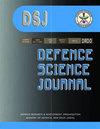Design Validation and Reliability Assurance of Electronic Systems Using the Next Generation RGT Models
IF 0.8
4区 工程技术
Q3 MULTIDISCIPLINARY SCIENCES
引用次数: 0
Abstract
Arrhenius Accelerated Growth Model (AAGT) is the next generation accelerated testing models used for design validation and reliability assurance of electronics systems. These models are used in design and manufacturing phases towards reliability enhancement of the system respectively. AAGT Models uses Highly Accelerated Stresses for screening of the components towards uncovering Compared to traditional qualification test methods, design flaws, latent defects, component selection problems, and manufacturing flaws can be detected fast. The procedure includes thermal dwells and quick temperature changes while subjecting the test unit to increasing degrees of stress. Dynamic stresses (Pseudo-Random Vibration covering all 6DOF systems) and a combination of thermal and dynamic PSD stresses towards quickly precipitating inherent/hidden defects quickly. These Accelerated models used to qualify modern active array radar modules like Transmit Receive Modules (TRMs) which will be in large numbers and It will be difficult and time-consuming to filter these modules individually using the traditional way. To increase the quality and dependability of electronic devices, much accelerated life tests have been extensively adopted. However, extremely accelerated life tests may only be used as a qualitative approach to assess a product's dependability; they cannot be used to quantify a product's reliability, such as MTBF/MTTF. Consequently, in order to efficiently assess the level of product reliability while improving product reliability in a timely manner. HALT/HASS uses Arrhenius Accelerated Growth Model that is an effective technique used for screening of the module with in short period. This paper discuss in detail with a case study on active array modules deliberating about the test methodology, challenges faced during Using Arrhenius accelerated test models, rapid testing and assessment of these Four channel TRMs used for airborne Fire Control Radar for combat operations.基于下一代RGT模型的电子系统设计验证与可靠性保证
阿伦尼乌斯加速增长模型(AAGT)是下一代加速测试模型,用于电子系统的设计验证和可靠性保证。这些模型分别用于设计阶段和制造阶段,以提高系统的可靠性。与传统的鉴定测试方法相比,AAGT模型使用高加速应力对组件进行筛选,可以快速检测设计缺陷、潜在缺陷、组件选择问题和制造缺陷。该程序包括热驻留和快速温度变化,同时使测试单元承受不断增加的应力。动态应力(涵盖所有6DOF系统的伪随机振动)以及热和动态PSD应力的组合,可以快速沉淀固有/隐藏缺陷。这些加速模型用于鉴定现代有源阵列雷达模块,如发射接收模块(trm),这些模块将大量存在,使用传统方法单独过滤这些模块将是困难和耗时的。为了提高电子器件的质量和可靠性,加速寿命试验已被广泛采用。但是,极快寿命试验只能用作评估产品可靠性的定性方法;它们不能用于量化产品的可靠性,如MTBF/MTTF。因此,为了有效地评估产品的可靠性水平,同时及时提高产品的可靠性。HALT/HASS采用阿伦尼乌斯加速生长模型,这是一种用于短时间筛选模块的有效技术。本文以有源阵列模块为例,详细讨论了用于作战作战的机载火控雷达的四通道trm的测试方法、使用Arrhenius加速测试模型所面临的挑战、快速测试和评估。
本文章由计算机程序翻译,如有差异,请以英文原文为准。
求助全文
约1分钟内获得全文
求助全文
来源期刊

Defence Science Journal
综合性期刊-综合性期刊
CiteScore
1.80
自引率
11.10%
发文量
69
审稿时长
7.5 months
期刊介绍:
Defence Science Journal is a peer-reviewed, multidisciplinary research journal in the area of defence science and technology. Journal feature recent progresses made in the field of defence/military support system and new findings/breakthroughs, etc. Major subject fields covered include: aeronautics, armaments, combat vehicles and engineering, biomedical sciences, computer sciences, electronics, material sciences, missiles, naval systems, etc.
 求助内容:
求助内容: 应助结果提醒方式:
应助结果提醒方式:


